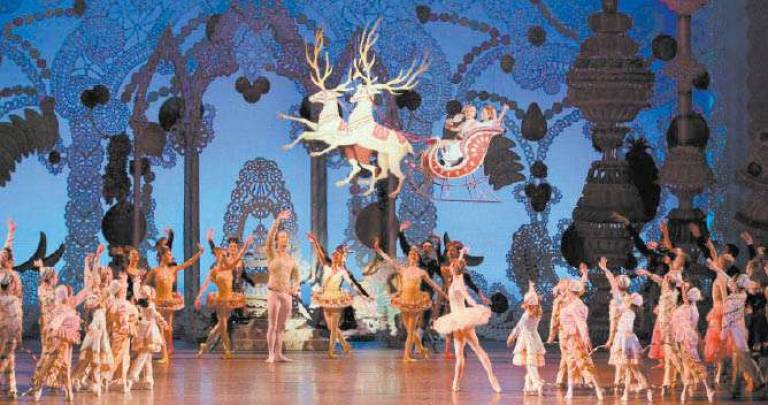The Keeper of the Snow Angels

Ever wonder who keeps all those kids pointed in the same direction at the ballet? The answer is Dena Abergel
Dena Abergel is a kid whisperer. If a production at New York City Ballet includes child dancers -- and some, like "The Nutcracker" have a lot of them -- it is Abergel who casts, teaches and rehearses them. Here, she talks about her favorite ballets for kids, what makes a good dancer, and how to know if your kid has the goods.
What is your actual job title?
I am the Children's Ballet Master for New York City Ballet and teach on the faculty at the School of American Ballet ages 8-13. Some of the productions I have worked on include George Balanchine's The Nutcracker, A Midsummer Night's Dream, Coppelia, Mozartiana, Harlequinade; Peter Martins' Sleeping Beauty, Swan Lake, Romeo and Juliet, Magic Flute; Jerome Robbins' Circus Polka among many others.
How old were you when you started dancing?
I was six years old when I began real ballet classes in New Jersey. I came to the School of American Ballet when I was 13. I danced in the corps de ballet of NYCB for 18 years.
What do you look for in each child?
Each child truly is unique and develops at his or her own pace. Some children have a natural sense of movement, while others really need to be taught step by step. For different roles, I look for different qualities. For example, this season we are performing both Coppelia and A Midsummer Night's Dream. Coppelia requires more classical dancing, while Midsummer requires more energetic quick movements. We have so many talented students now at SAB that I was able to give all the roles to different students, giving more children opportunities to perform with the company. What is most important to me, aside from their ability to execute the steps, is their desire to work hard and their ability to project when they dance. When a child looks like he or she is enjoying dancing, it gives the whole audience pleasure. Ultimately, that is what dancing is all about.
What is the rehearsal process like?
Typically we rehearse for three or four hours on Sundays (seven or eight during Nutcracker) and twice a week after classes for an hour and a half. Since we are working with children, we can only work with them after 7 p.m., when academic and ballet classes are finished. These kids are really committed and dedicated. They are little professionals! What amazes me is that at 8:30 at night, after hours of school and ballet classes, they never want the rehearsal to end.
We only get to rehearse on stage once or twice before the performance with the company. That is the most exciting and stressful time because all the hours of work in the studio suddenly become real. The kids have lights, costumes, company dancers and no mirror. They are in a totally different environment and need to remember everything I have taught them in the studio. It's truly amazing how well they perform under pressure.
Do the kids have a favorite ballet?
Nutcracker is wonderful for children for so many reasons. It is a magical ballet that opens their eyes and hearts to the world of ballet. Children often perform many roles over the years, but "grow up" in the Nutcracker. There are 63 children in each cast, and we have two complete casts which means rehearsing 126 children for the ballet. Balanchine brilliantly taught the students step by step how to learn choreography. For example, the youngest children often perform as angels in the second act. There are no steps in the choreography, just formations. The children must learn to count the music and create their formations at exactly the right time in the right space on the stage. Party scene is full of acting, but also playful dancing and a very proper "Grandfather's Dance," which is more of a social dance than ballet. As the children get older and learn more, they can dance as Polichinelles and Hoops, which have more challenging choreography. I have loved teaching Coppelia and A Midsummer Night's Dream, as well. The wonderful thing about this job is that the choreography is so fantastic and the music is wonderful. Each year I have new children to introduce to this magical world. Their excitement and enthusiasm makes teaching them a wonderful experience for me.
Who does their makeup and costumes?
The kids or parents do their own makeup. It is never heavy because Balanchine wanted the children to look like children. The costume department of the company takes care of their costumes.
What is your advice to all the little ones out there -- and their parents -- who want to be professional ballet dancers?
If you love to dance, work hard, listen thoroughly and watch carefully. Then, dance your heart out.